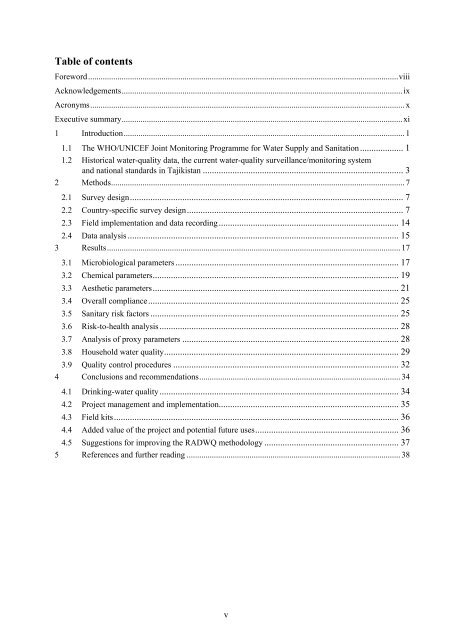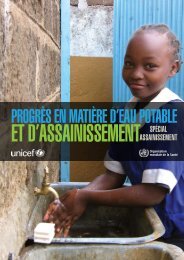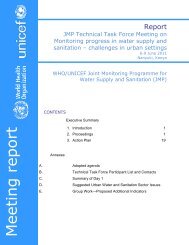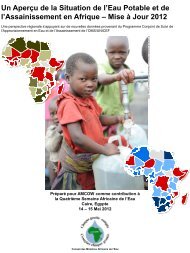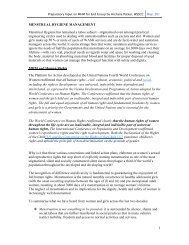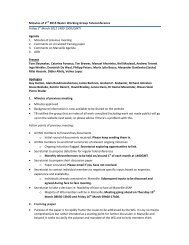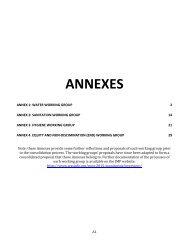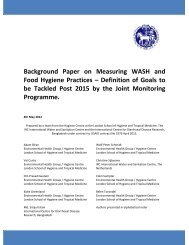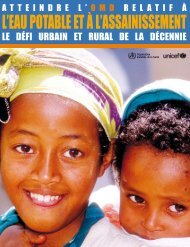rapid assessment of drinking-water quality in the republic of tajikistan
rapid assessment of drinking-water quality in the republic of tajikistan
rapid assessment of drinking-water quality in the republic of tajikistan
You also want an ePaper? Increase the reach of your titles
YUMPU automatically turns print PDFs into web optimized ePapers that Google loves.
Table <strong>of</strong> contents<br />
Foreword....................................................................................................................................................viii<br />
Acknowledgements......................................................................................................................................ix<br />
Acronyms...................................................................................................................................................... x<br />
Executive summary......................................................................................................................................xi<br />
1 Introduction...................................................................................................................................... 1<br />
1.1 The WHO/UNICEF Jo<strong>in</strong>t Monitor<strong>in</strong>g Programme for Water Supply and Sanitation................... 1<br />
1.2 Historical <strong>water</strong>-<strong>quality</strong> data, <strong>the</strong> current <strong>water</strong>-<strong>quality</strong> surveillance/monitor<strong>in</strong>g system<br />
and national standards <strong>in</strong> Tajikistan ........................................................................................ 3<br />
2 Methods............................................................................................................................................ 7<br />
2.1 Survey design........................................................................................................................ 7<br />
2.2 Country-specific survey design............................................................................................... 7<br />
2.3 Field implementation and data record<strong>in</strong>g............................................................................... 14<br />
2.4 Data analysis ....................................................................................................................... 15<br />
3 Results............................................................................................................................................ 17<br />
3.1 Microbiological parameters .................................................................................................. 17<br />
3.2 Chemical parameters............................................................................................................ 19<br />
3.3 Aes<strong>the</strong>tic parameters............................................................................................................ 21<br />
3.4 Overall compliance.............................................................................................................. 25<br />
3.5 Sanitary risk factors ............................................................................................................. 25<br />
3.6 Risk-to-health analysis......................................................................................................... 28<br />
3.7 Analysis <strong>of</strong> proxy parameters ............................................................................................... 28<br />
3.8 Household <strong>water</strong> <strong>quality</strong>....................................................................................................... 29<br />
3.9 Quality control procedures ................................................................................................... 32<br />
4 Conclusions and recommendations................................................................................................ 34<br />
4.1 Dr<strong>in</strong>k<strong>in</strong>g-<strong>water</strong> <strong>quality</strong>......................................................................................................... 34<br />
4.2 Project management and implementation............................................................................... 35<br />
4.3 Field kits............................................................................................................................. 36<br />
4.4 Added value <strong>of</strong> <strong>the</strong> project and potential future uses............................................................... 36<br />
4.5 Suggestions for improv<strong>in</strong>g <strong>the</strong> RADWQ methodology ........................................................... 37<br />
5 References and fur<strong>the</strong>r read<strong>in</strong>g ...................................................................................................... 38<br />
v


